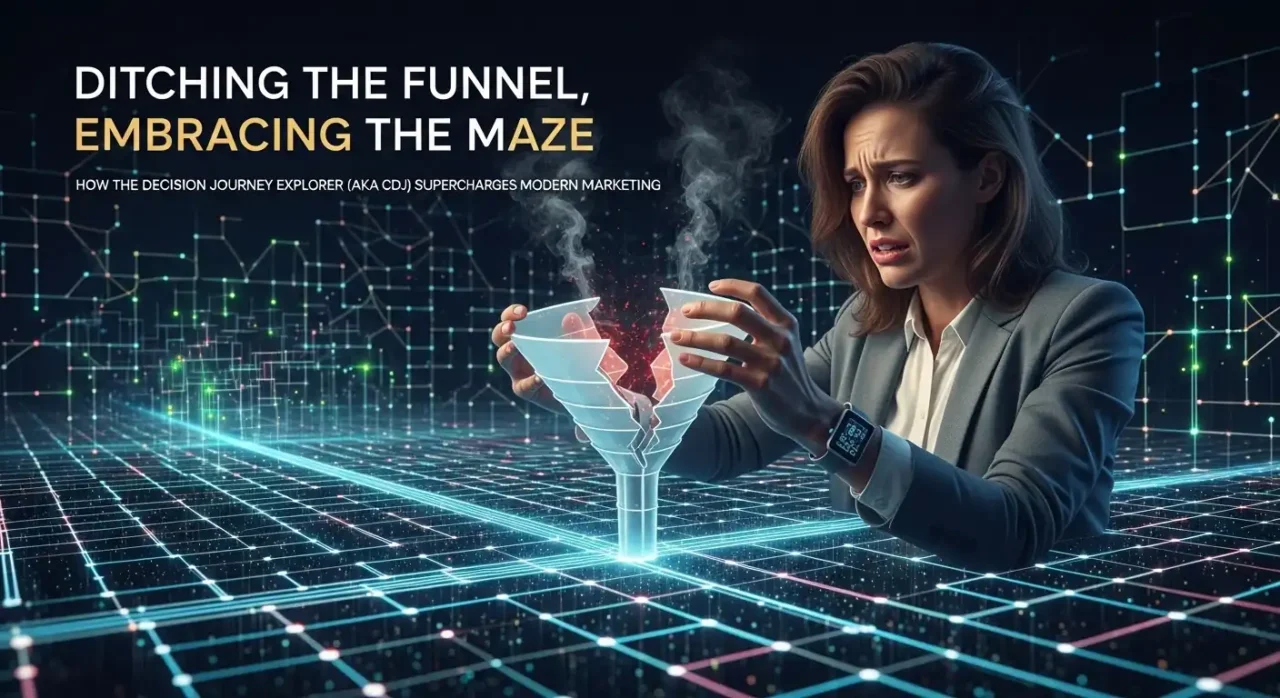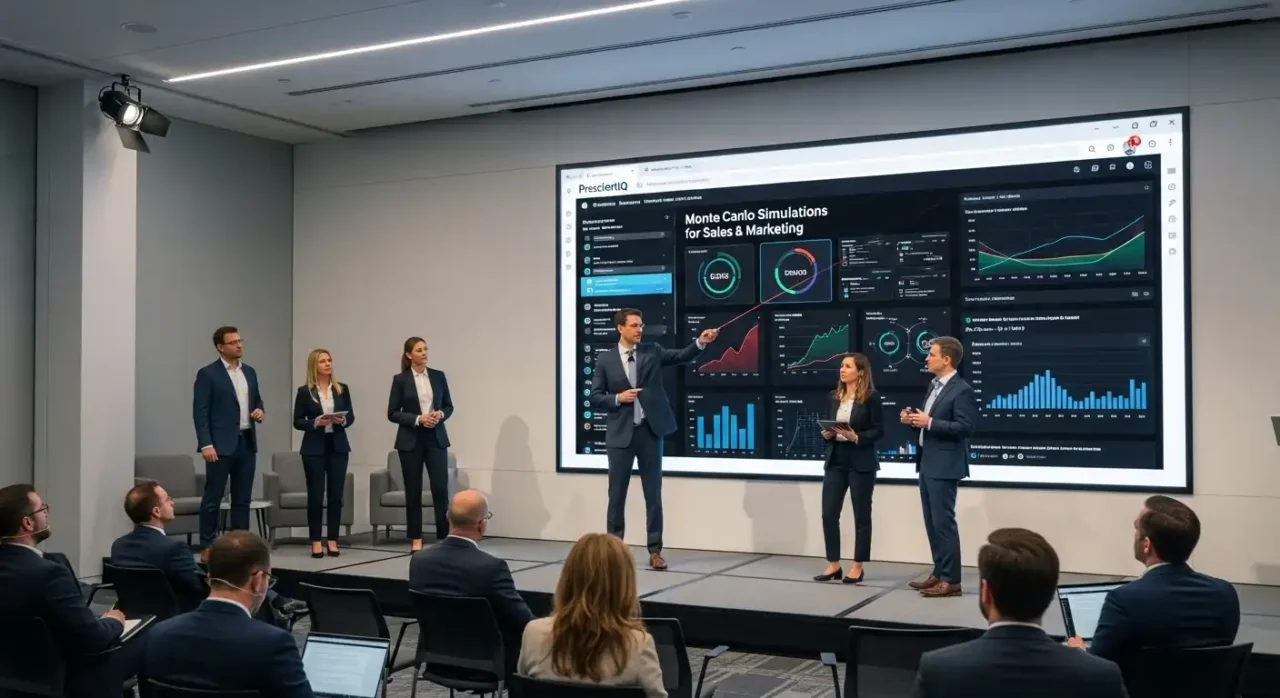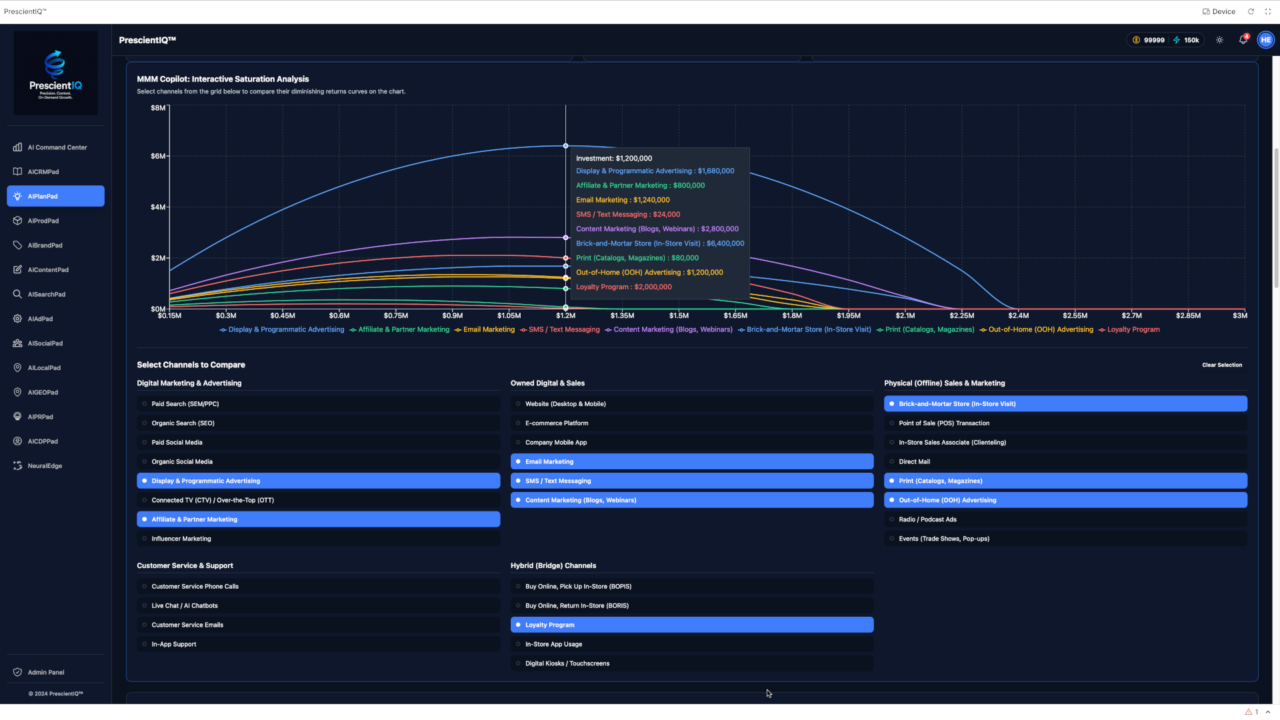What is Causal AI? A Beginner’s Guide for Chief Marketing Officers
Learn About What Causal AI Is. A Beginner’s Guide for Chief Marketing Officers?
Moving from “What Happened?” to “Why It Happened” — and “What to Do Next”
Over the past decade, marketing has evolved from an art to a science.
Today, CMOs have access to more data, dashboards, and algorithms than ever before.
Every click, conversion, and conversation is measurable. Yet, despite all this intelligence, most marketing leaders still struggle with a fundamental question:
Why did this happen?
Why did a campaign perform better in Q3 than in Q2? Why did retention improve among one customer segment but not another? Why did sales jump in one market and stall in another?
The problem isn’t a lack of data — it’s a lack of causal understanding.
Traditional analytics and AI tools can tell us what correlates with performance. But they rarely reveal why performance changes in the first place.
That’s where Causal AI comes in — a new generation of artificial intelligence designed to uncover cause-and-effect relationships. For CMOs navigating complex, multichannel environments, Causal AI represents a leap from reactive analysis to proactive strategy.
1. Understanding Causal AI — The Next Evolution in Intelligence

Imagine this: you run a campaign to promote a new product. Conversions increase by 12%. Traditional analytics tell you that sales went up and might even identify a few correlated variables — like higher website traffic or ad impressions.
But correlation isn’t causation. Those conversions might have risen because of a seasonal surge, a competitor’s misstep, or even a media mention you didn’t pay for.
Causal AI helps you go deeper. It identifies which factors truly caused the lift — and to what degree. Instead of guessing or running endless A/B tests, you can simulate outcomes and understand what would have happened if you’d done something differently.
In simple terms:
- Predictive AI answers: “What’s likely to happen next?”
- Causal AI answers: “Why did this happen — and what if we changed it?”
That “why” is the most powerful word in marketing.
2. Why CMOs Should Care About Causal AI
For chief marketing officers, every decision is an exercise in causality — whether you realize it or not.
When you ask, “Did our social campaign cause the uptick in demos?” or “What caused churn to spike?” — you’re already thinking causally. The problem is that most analytics systems aren’t built to answer those questions.
They’re built to describe patterns, not explain mechanisms. What is the quantum customer?
Causal AI gives CMOs something new: decision intelligence. It allows leaders to understand the levers that drive performance — not just the metrics that describe it.
Why This Matters Now
- Budgets are tightening. CMOs must prove which investments cause measurable ROI.
- Customer journeys are complex. With dozens of touchpoints, simple attribution models fail.
- AI adoption is accelerating. Understanding causal reasoning is key to separating signal from noise in automated insights.
In short, Causal AI turns marketing from a guessing game into a science of decisions.
3. Predictive AI vs. Causal AI: The Marketing Perspective
| Feature | Predictive AI | Causal AI |
| Primary Goal | Forecast outcomes | Explain and simulate outcomes |
| Question Asked | “What will happen next?” | “Why did it happen?” |
| Core Technique | Correlation analysis | Cause-and-effect modeling |
| Example | Predicts customers likely to churn | Reveals what causes churn |
| Marketing Value | Improves targeting | Improves strategic decision-making |
Predictive AI tells you what to expect. Causal AI tells you what to change.
And in an era where CMOs are expected to drive not just brand awareness but business growth, understanding “why” is no longer optional — it’s essential.
4. How Causal AI Works (Without the Math)
Causal AI is rooted in the concept of causal graphs — visual models that describe how different factors influence one another.
Imagine you’re looking at a flowchart of your marketing ecosystem:
Ad Spend → Web Traffic → Conversions → Revenue
↓
Brand Awareness
Each arrow represents a potential causal link. The system doesn’t just track correlations; it tests hypotheses about directionality — which variable influences which.
Once those relationships are established, Causal AI uses advanced reasoning, including counterfactuals (“what if” scenarios), to explore alternate realities.
- What if we hadn’t run that influencer campaign?
- What if we increased email frequency by 15%?
- What if we shifted 10% of spend from paid search to organic?
By simulating interventions, Causal AI helps CMOs make evidence-based decisions before taking action.
5. Real-World Marketing Applications

Causal AI is not theoretical. It’s already transforming how leading organizations plan, measure, and optimize marketing.
A. Campaign Optimization
Instead of simply tracking engagement, Causal AI isolates which campaign elements caused performance.
- Did the creative itself drive conversions, or was timing the key?
- Did a new CTA cause more form fills, or was it the channel mix?
Marketers can now reallocate spend with confidence.
B. Attribution Reinvented
Forget the old “last-click” model. Causal AI evaluates how multiple channels interact causally.
Example: A customer might see a YouTube ad, read a blog, and later click a LinkedIn link. Causal AI can tell you that the blog was the real catalyst.
C. Pricing and Promotions
Rather than trial and error, Causal AI models how changes in pricing influence behavior.
It reveals whether discounts cause short-term sales or erode long-term value.
D. Customer Retention and Experience
Predictive models flag at-risk customers. Causal AI tells you why they’re leaving — poor onboarding, lack of perceived value, or communication frequency.
That causal insight turns retention from reaction to prevention.
E. Brand Strategy
CMOs have long struggled to prove the ROI of brand investments.
Causal AI quantifies the causal link between brand awareness campaigns and long-term revenue growth.
F. Experimentation Efficiency
Causal AI reduces the need for endless A/B testing.
Instead, it can infer likely outcomes from existing data, allowing marketers to test virtually before deploying in the real world.
6. Story: The CMO Who Needed More Than a Dashboard

Let’s ground this in a real-world story.
A global B2B SaaS company faced a familiar dilemma: marketing metrics looked good, but pipeline quality was declining. The CMO was drowning in dashboards — website visits up, ad impressions up, email opens steady — but revenue conversion lagged.
When they implemented PrescientIQ’s Causal AI platform, the results were eye-opening. The system revealed that an uptick in leads was driven by increased brand awareness from a major podcast sponsorship, not the paid search campaigns they were optimizing.
Even more striking: email campaigns had a negative causal impact on qualified leads due to oversaturation.
With that insight, the CMO shifted 20% of the budget toward brand partnerships and reduced email volume — leading to a 17% increase in marketing-qualified leads within two quarters.
That’s the power of causal clarity.
7. How PrescientIQ Makes Causal AI Work for CMOs

PrescientIQ was built to make causal reasoning practical, accessible, and actionable — especially for marketing and business leaders who need answers, not algorithms.
A. Unified Causal Intelligence
PrescientIQ connects every data source — CRM, ad platforms, ERP, and analytics tools — into a single causal ecosystem. It visualizes the hidden links between campaigns, customer behaviors, and outcomes.
B. Automated Causal Modeling
You don’t need a data scientist to use it. PrescientIQ automatically tests hypotheses, detects causal pathways, and reveals “what really drives” each KPI.
It’s like having a team of Ph. D.-level data scientists on your dashboard, constantly refining your marketing model.
C. Scenario Simulation
With PrescientIQ, CMOs can run counterfactual simulations:
- What if we doubled social media spend?
- What if we reduced webinar frequency?
- What if we launched in a new market?
These insights go beyond prediction — they guide strategic action.
D. Industry-Calibrated Frameworks
PrescientIQ adapts its causal models to industry-specific dynamics — recognizing that marketing levers differ dramatically between a SaaS company and a healthcare provider.
Let’s explore how Causal AI is reshaping strategy across key industries.
8. Industry Spotlight: How Causal AI Transforms Different Sectors
Technology
In the tech world, growth is driven by ecosystems, not funnels. PrescientIQ helps CMOs identify causal links between product usage, marketing touchpoints, and renewal behavior.
A software firm used it to discover that usage-based pricing communications caused a 15% lift in conversions — insights predictive models missed entirely.
Manufacturing
Manufacturing CMOs often operate in complex, multi-step sales processes involving distributors, dealers, and end users.
PrescientIQ found that educational webinars drove greater distributor engagement than costly trade show participation, resulting in a 25% reduction in event spend and improved ROI.
Professional Services
In consulting and accounting, brand credibility and trust are intangible yet essential.
A global professional services firm used PrescientIQ to uncover that its whitepapers and LinkedIn thought leadership caused a measurable uptick in inbound RFPs — far more than direct email outreach.
That discovery justified reallocating spend toward content marketing, saving over $2 million annually.
Financial Services
Trust drives everything in financial marketing.
A fintech firm deployed PrescientIQ to analyze conversion data and found that personalized financial education content — not traditional ads — drove customers to adopt savings products at 3x the rate.
The insight led to a rebrand centered on empowerment rather than acquisition.
Healthcare
In healthcare marketing, causality isn’t just strategic — it’s ethical.
A regional provider used PrescientIQ to understand why patient engagement was dropping despite increased ad spend.
The causal model revealed that appointment reminders — not awareness campaigns — were the true driver of follow-up visits.
By shifting focus, they improved care adherence and marketing ROI simultaneously.
9. The PrescientIQ Difference

PrescientIQ stands out by blending scientific rigor with executive simplicity.
Transparency
Every insight is traceable to its causal chain — no “black box” explanations. Marketing leaders can see exactly why the system recommends certain actions.
Continuous Learning
As new data flows in, the model self-corrects, staying accurate in dynamic markets.
Collaboration-Ready
PrescientIQ integrates with CRM and BI tools, allowing marketing, finance, and product teams to share a unified understanding of how business levers interact.
10. The Future of Marketing: From Correlation to Causation
In an era of automation, the most valuable human skill is understanding why.
Causal AI doesn’t replace human intuition — it enhances it. It gives CMOs the tools to:
- Anticipate outcomes before they happen.
- Justify budgets with data-backed causality.
- Build smarter, more adaptive marketing ecosystems.
The future of marketing leadership belongs to those who combine creativity with causal clarity.
Predictive AI tells you what’s likely to happen.
Causal AI tells you how to make it happen.
11. Key Takeaways for CMOs
- Shift from correlation to causation. Ask “why” before “what next.”
- Integrate causality into strategy. Don’t just measure — model.
- Adopt platforms like PrescientIQ. Operationalize causal intelligence across your organization.
- Collaborate across silos. Align marketing, finance, and product around shared cause-and-effect insights.
- Lead with curiosity. The CMOs who understand causality will own the next decade of growth.
12. Closing Thought: The CMO as a Scientist
In the near future, CMOs won’t just be storytellers or strategists — they’ll be scientists of growth.
They’ll know not only which levers to pull but exactly why those levers work.
Causal AI and PrescientIQ give them that power — to transform marketing from reactive analytics into proactive intelligence.
The organizations that master causal reasoning won’t just react to the market. They’ll shape it.
Your B2B Tech Metrics
Enter your current 12-month averages to analyze your growth potential.
Technology Marketing Analysis
Marketing-Sourced Pipeline
Sales Cycle Length
Lead-to-SQO Conversion
Anonymous Visitor Intelligence
*Goal re-defined as ‘Visitors to Identified Accounts’
Close Your Performance Gap
Matrix Marketing Group combines AI technology with expert services to turn these goals into reality.
Book a Strategy Call
